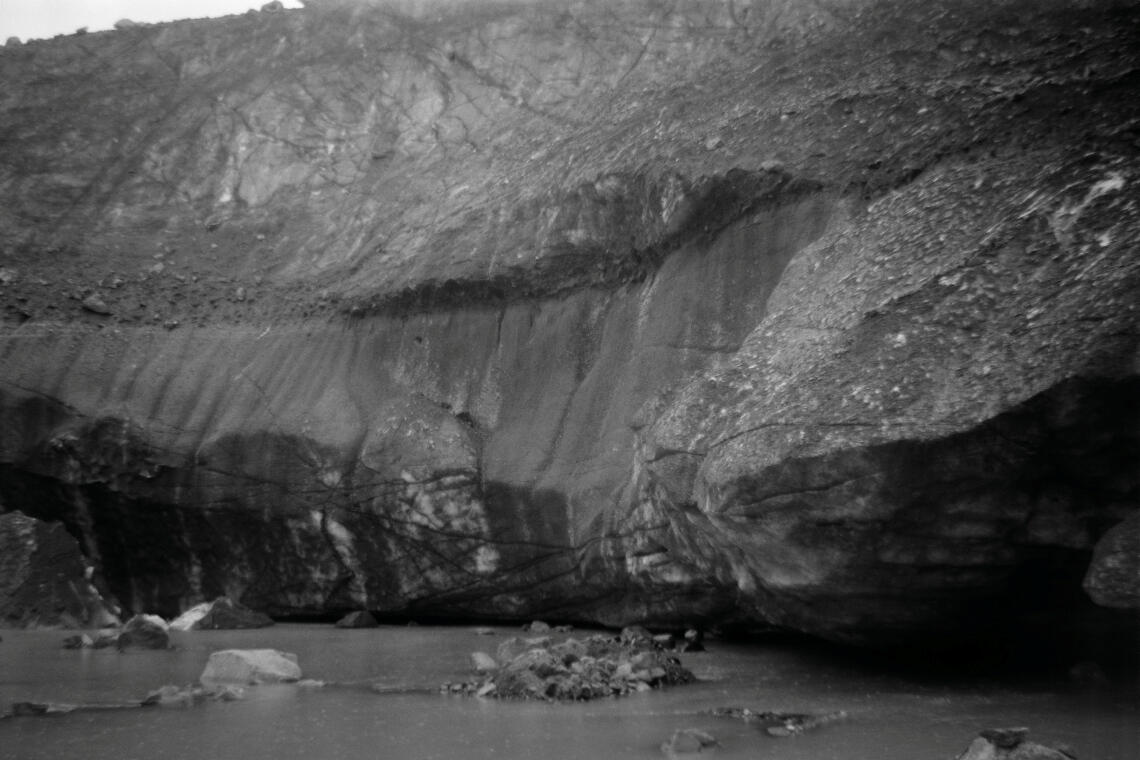- 1/1
© Line Bøhmer Løkken, Immersed in Stone #104, 2018. Preus museum Collection.
"She spends several days walking in the mountains. The ground is either slippery or loose. Every time a rock comes loose, it causes a small avalanche beneath her. A fatal fall could trap her in this inhospitable and deserted landscape. She is verging on the outer limits of herself."
This description has been extracted from Line Bøhmer Løkken's story about a mountain trip that resulted in this series which consists of 53 photos, where 7 of which are in colour. The colour photos were taken with a disposable camera, while the black and white photos were taken with a single medium format camera.
The trip was very challenging and it was only during breaks that Løkken considered it to be safe to take photographs. When she developed her photographs she felt like a physical remnant of the trip had become attached to the film. The landscape had been seen not only with the eye, but also with the body.
If we look at the photos, we see that many of them have been taken from a relatively low angle. Our gaze often meets a large stone surface. In other photos we are confronted with boulders in the foreground which serve as a counterbalance to the wider view. The colour photos depict snow, glacier edges and ice-blue water. The sequence breaks up the greyish-white flow of rock, mountains and snow.
The water pictures were also the start of another project, Water Matter, which Løkken commenced at around the same time. She wanted to create a record of the colour of the water between Jotunheimen and Lake Mjøsa and look at the colour changes of various minerals, but also pollution. She worked with water researchers and became interested in phosphorus, which is one of the sources of agricultural pollution. Phosphorus is an important component in fertilisers and it is also in short global supply.
Løkken's work shows the complexity of many nature-themed projects. It is about the existential encounter with nature and the mountain that plays on the lonely (and often male) hiker's encounter with unspoiled nature. But for Løkken it can also be about a more objective investigation of water pollution.
This text has been taken from an essay written for the exhibition catalogue by Christine Hansen, the co-curator of the exhibition.
